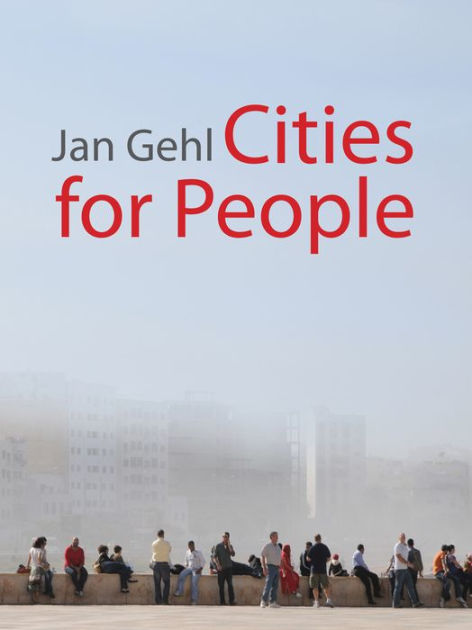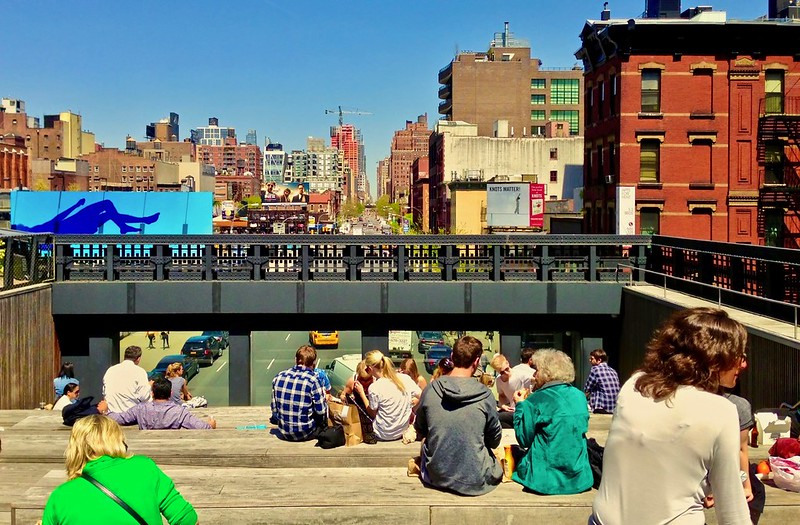Top 14 books & events of the 2010s (views from the USA)
Read time: 3-4 minutes
As we enter a brand new decade, the American spatial planning community has been generous in providing retrospectives of the past decade. Here are some highlights.
Planetizen, the iconic US-based portal for professional planners, researchers and young planners-in-the-making, shares a mainly US-focused list of the top urban planning books of the decade. Planetizen applies the same selection criteria as for its yearly selection of top planning books. The 14 selected entries for 2010-2019 are:
- The BLDGBLOG Book (2009) (i.e.: the eponymous blog-inspired 'Building Blog') by Geoff Manaug.
- Cities for People (2010) by architect Jan Gehl.
- Triumph of the City: How our Greatest Invention Makes Us Richer, Smarter, Greener, Healthier, and Happier (2011) by economics Harvard professor Edward Glaeser.
- Walkable City: How Downtown Can Save America, One Step at a Time (2012) by Jeff Speck.
- Happy City: Transforming Our Lives Through Urban Design (2013) by Charles Montgomery.
- The Invention of Nature: Alexander Von Humbolt (2015) by Andrea Wulf.
- Tactical Urbanism: Short-term Action for Long-term Change (2015) by Mike Lydon and Anthony Garcia, both Principals at the firm Street Plans.
- Zoned in the USA:The Origins and Implications of American Land-Use Regulation (2014) by Sonja Hirt, Professor of Landscape architecture and planning at the University of Georgia.
- Zoning Rules! The Economics of Land Use Regulation (2015) by William A. Fischel. Professor of Economics (Emeritus) at Dartmouth University.
- Evicted: Poverty and Profit in the American City (2016) by Matthew Desmond, Professor of Sociology at Princeton University.
- Streetfight: Handbook for an Urban Revolution (2016) byJanette Sadik-Khan (former New York City transportation director under Mayor Michael Bloomberg) and Seth Solomonow (transportation and media expert at Bloomberg Associates).
- The Color of Law: The Forgotten History of How Our Government Segregated America (2017) by Richard Rothstein, Distinguished Fellow of the Economic Policy Institute.
- The New Urban Crisis: How Our Cities Are Increasing Inequality, Deepening Segregation, and Failing the Middle Class - And What We Can Do About It (2017) by Richard Florida, award-winning advocate of the creative class and Professor at the Univeristy of Toronto (editor's note: see the Guardian book review by Danny Dorling, Professor of Human Geography at Oxford University).
- The Divided City: Poverty and Prosperity in Urban America (2018) by Allan Mallach, Senior Fellow at the Center for Community Progress and the National Housing Institute.

Cities for People by influential architect Jan Gehl, published in 2010. One of the fourteen books by Planetizen as most influential in the previous decade.
Planetizen also provides an assessment of key events and movements that have shaped the decade in urban planning in the USA. Planetizen contributor James Brasuell identifies the following events:
- economic recovery from the 2008 economic meltdown
- the rise of the Millennial generation
- enduring racism and segregation
- the combined rise of Uber, high traffic-related accidents and insufficient adoption of public transport across the US
- climate change and resilience
To conclude, the article by James Brasuell identifies a lack of political understanding and commitment about the role of urban planning in tackling affordable housing, sustainable land use, transportation and climate change.
Besides the above, State of Place identifies additional events in its review of the top 12 citymaking movements of the 2010s. These include:
- the increasing popularity of walkability
- the increasing importance of tech and data in the urban planning world
- a growth in localised tactical urbanist initiatives
- a global uptake of placemaking endeavours
- official recognition of the climate emergency crisis
- increasing acknowledgement of the links between public health and the quality of the built environment
- paying lip service to equity in contexts of gentrification
In all, the above insight highlight that much remains to be in the 2020s to further build on previous efforts to tackle inequalities and environmental risks. Climate change in 2050 will likely shift local weather patterns 'two states south' . Several US cities are already making bold efforts to address climate change and must continue to do more. The non-profit charity CDP lists cities and companies based on their environmental performance - key in 'North America' to see how cities in the region are faring.
Beyond the US, cities worldwide must embrace the then-in vogue Agenda 21 motto of the 1990s: think globally, act locally. UN-Habitat recognises the role of cities as a 'cause of and solution to' climate change. For example, Erica Sanchez and Stephanie Hodson at Global Citizen list five key ways in which cities can act:
- sustainable urban planning
- tackling plastic pollution and pursuing zero waste
- making transportation sustainable
- making carbon dioxide expensive
- green buildings
Ryan Plummer and colleagues, in turn, add resilience thinking, green infrastructure, collaboration between cities as three important avenues for action.
The following decade will therefore require cities within the US and around the world to learn from each other and collaborate extensively to address the impending social, economic, and environmental challenges ahead, and to capitalise on the synergies thereof.

Every planning intervention adds up! The Highline over 10th avenue, New York City. Picture by Andreas Komodromos (taken May 2013), on Flickr. CC Attribution Non-Commercial. The High Line is a 1.45 mile long linear park and the product of retrofitting a disused central railroad track.
Feel free to share links to, or your very own, retrospectives concerning your region/country and send them to:
When you subscribe to the blog, we will send you an e-mail when there are new updates on the site so you wouldn't miss them.


Comments 1
[…] Top books and key events of the 2010s in the USA – a review of the landmark books and events that contributed to shape a decade of spatial planning in the United States […]